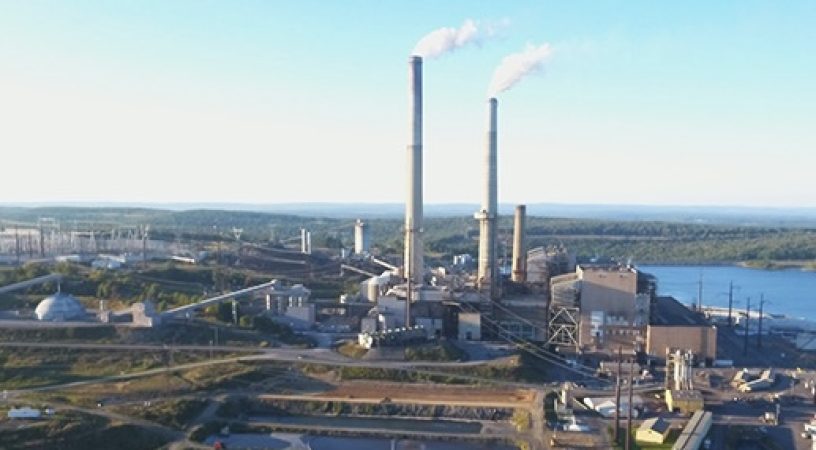The following has been submitted to the State Corporation Commission via the public comment portal it has established for Dominion Energy Virginia’s pending 2023 Integrated Resource Plan. It was drafted by Jefferson Institute Senior Fellow Stephen D. Haner.
Dominion Energy Virginia is acting reasonably and prudently by planning to maintain most of its natural gas generation and perhaps some of its coal generation for the foreseeable future, despite narrow votes in the Virginia General Assembly in favor of eliminating their use.
That is the only aspect of the pending Integrated Resource Plan review (PUR-2023-00066) on which the Thomas Jefferson Institute for Public Policy is offering an opinion. However, the opinion is strongly reinforced by data put on the case record by the State Corporation Commission’s own professional staff and cited below.
The modern proverb that all models are wrong, but some models are useful must have been devised by somebody doing long-range utility planning. It is unlikely any utility, Dominion Energy Virginia included, can project 15 or 25 years into the future and make accurate calls on customer demand, commodity prices, or government policy. The other stakeholders in the current Dominion integrated resource planning also lack the gift of prophecy.
Yet the debate so far in this dispute seems to focus almost entirely on the projected future demand for electricity within Dominion’s Virginia jurisdictional territory. Outside experts retained by various parties and the SCC’s own consultant have offered fairly strong reasons to doubt the utility’s fairly aggressive projections of future demand. It is their models versus Dominion’s.
That overlooks a key point. Even if the demand does not grow as rapidly as projected by the utility, the need remains to maintain reliability as the solar and wind assets proliferate. The risk to energy stability from intermittent renewables is now being widely recognized, not least by the very regional transmission organization to which Dominion and Virginia belong, PJM.
The recent official comments PJM filed with the U.S. Environmental Protection Agency, raising concerns about the impact of its efforts to drive fossil fuels out of the energy generation mix, seem equally applicable in the discussion now before the SCC. If not made an official part of this record, the SCC should at least keep PJM’s warnings in mind.
Your own staff is also pointing directly to the problems. See for example Matthew Glattfelder’s testimony, which among other things challenges Dominion’s claims about the effective load-carrying capacity, of ELCC, of the massive wind and solar fleets Dominion plans to have online within a few more years. The fact that Dominion is making such optimistic predictions about the value to reliability of those additions, predictions that exceed PJM’s own view of the matter, is far more troubling than the debate over future demand growth.
Glattfelder also raises questions about Dominion’s optimistic projections of how much energy it will receive from the massive solar facilities and the small number of onshore wind facilities it included in the plan. Again, PJM data indicate existing projects produce less power than Dominion is expecting from these new installations. Even a one percentage point reduction in the 22% solar capacity factor matters when Dominion is planning to add 11 gigawatts of solar in the next 15 years.
The doubts about ELCC and solar and wind capacity factors raised by Glattfelder make the retention of the more reliable thermal generation sources all the more important. The proper mix between the various sources to maintain reliability is a complicated engineering decision, but if less future demand materializes, surely that should lead to fewer solar and wind installations and not just fewer thermal resources.
Andrew Boehnlein’s testimony finds “significant headwinds” against Dominion’s claims it will use demand side management programs to reduce its demand 5%, especially since it cannot name what methods it will use and so far the company has a weak track record of getting customers to participate. This undercuts the many witnesses from environmental advocacy groups who asserted that Dominion should rely even more heavily on energy efficiency incentives. Again, we will continue to need reliable thermal generation.
Finally, there is the evidence provided by the cost models. The bill impact spreadsheets in Anna L. Clayton’s testimony (mirroring Dominion’s own) show a continued upward trend in the long-term costs. The residential, commercial, and industrial bill illustrations for the end of the planning period are slightly higher than those filed with previous IRP documents. These only go up with time.
A year ago, the projections were that the bill for a residential user of 1,000 kilowatt hours would reach $185.81 by the end of 2030 and $213.36 by the end of 2035, using the Commission’s preferred methodology. Now those figures are $193.12 by 2030 and $235.40 by 2035, a 103% increase over May 2020. Dominion projects lower figures but does so by assuming the much higher levels of demand, the levels of demand disputed by so many witnesses.
Those monthly costs are for Plan B in Dominion’s plan, the scenario that keeps most of the thermal generation online and even adds additional natural gas generation. As high as the projections are, they are lower than the projected customer costs under Dominion’s Plans D and E, the plans which remove all those plants. Plan D has the highest cost, topping out at $254.40 per month, an increase of almost 120% (over $1,600 per year) above May 2020.
As with all the models under discussion, cost models rely on a raft of assumptions, but the indication is clear that continuing with some thermal generation is the lower-cost approach. Ignoring the dictates of the Virginia Clean Economy Act would be lower still, as Dominion’s Plan A illustrates, but that is probably not an option under current law. (Plan A’s 2035 monthly cost is pegged at $217.36.)
For a reliable energy future, Dominion’s customers need at least the level of thermal generation it now has in Plan B to continue in operation. Please support that in your final order.
Virginians are encouraged to offer their own comments in support of reliable and affordable energy by clicking here.

Steve Haner is Senior Fellow with the Thomas Jefferson Institute for Public Policy. He may be reached at Steve@thomasjeffersoninst.org.






